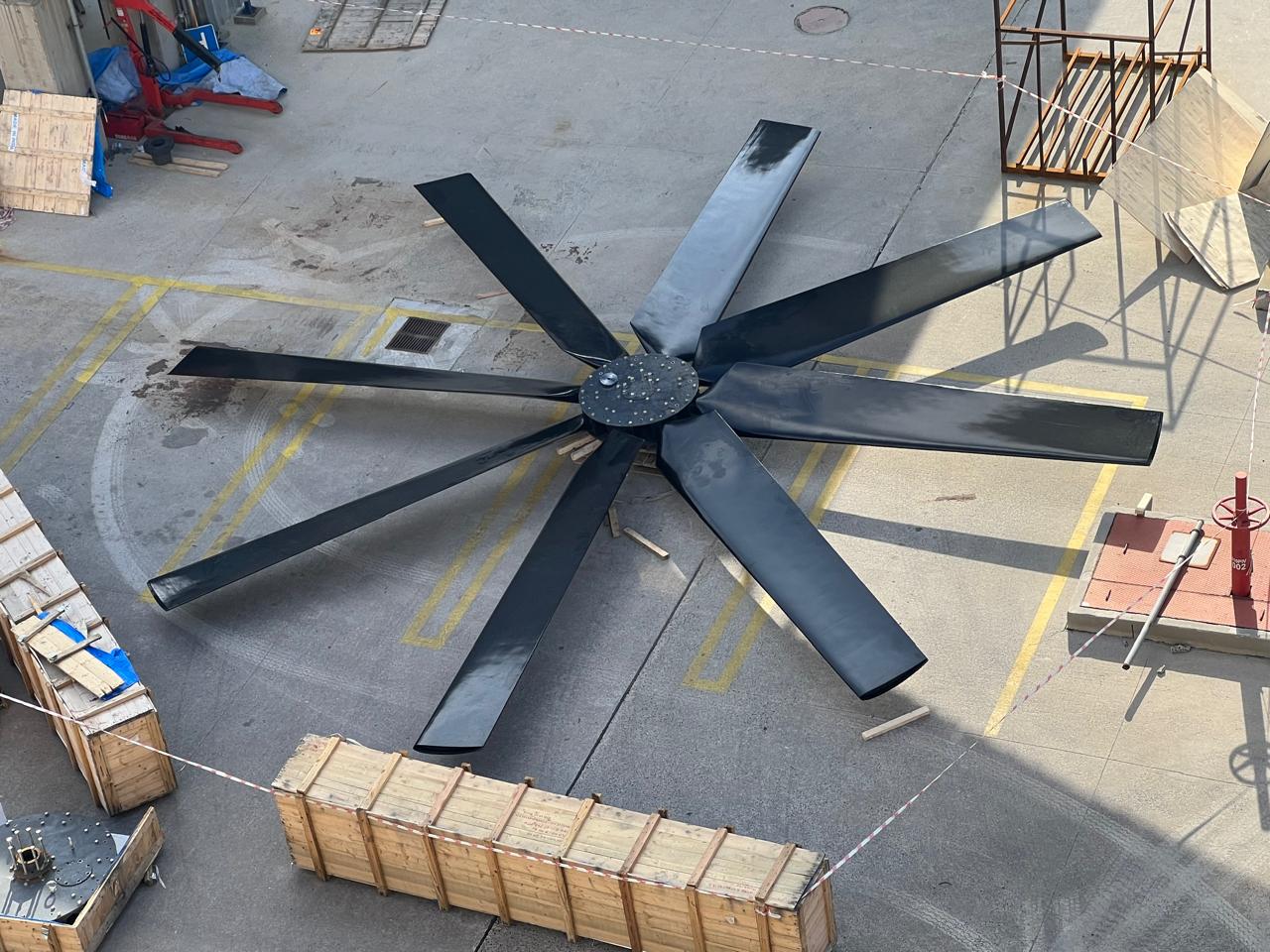Encons Innovative Carbon Fiber Fan Blades - CFRP : Unveiling the Benefits and Applications
Step into the world of CFRP fans with this comprehensive guide,
exploring the numerous benefits, diverse applications, and promising future of
these advanced components. Whether you're an industry professional or simply
curious about carbon fiber reinforced polymer fans, this article offers
valuable insights to deepen your understanding of CFRP technology and
its growing significance across various sectors.
What are CFRP Fans?
Understanding CFRP (Carbon Fiber
Reinforced Polymer)
CFRP (Carbon Fiber Reinforced Polymer), is a composite material made
of carbon fibers embedded in a polymer matrix. This unique combination results
in a material that is incredibly strong, lightweight, and durable, making it an
excellent choice for a wide range of applications.
Introduction to CFRP Fans
CFRP industrial fans are engineered using carbon fiber reinforced polymer materials to take
advantage of their exceptional properties. Known for their strength, corrosion
resistance, and energy efficiency, these fans are widely used across industries
where reliable, high-performance airflow is essential.
Benefits of CFRP Fans
1. Light weight and High Strength
CFRP axial fans and other types of CFRP fans offer an outstanding strength-to-weight
ratio. Carbon fiber reinforcement provides remarkable tensile strength without
adding unnecessary weight. This makes them ideal for applications where
reducing load is critical without compromising on durability.
2. Corrosion Resistance
Unlike metal fans, CFRP cooling fans resist corrosion, even in
environments with high moisture, chemicals, or extreme temperatures. This
resistance leads to longer service life and minimal maintenance, making them a
cost-effective choice for harsh environments.
3. Energy Efficiency
The reduced rotational inertia of CFRP fans lowers energy consumption
compared to traditional metal fans. Combined with their aerodynamic design,
these fans optimize airflow, resulting in significant energy savings.
4. Noise Reduction
CFRP fans operate with minimal noise. The inherent damping properties of carbon
fiber reduce vibrations and noise levels, making them ideal for noise-sensitive
applications such as HVAC systems in commercial spaces.
Applications of CFRP Fans
1. Power Plants
- Cooling Towers: Enhances
thermal efficiency with lightweight, corrosion-resistant CFRP fan
blades that reduce motor load.
- Boiler Systems: Withstand high
temperatures and corrosive gases, ensuring reliable performance.
- Air
Circulation: Provides effective airflow control for optimized combustion and
heat transfer.
2. Refineries
- Cooling
Systems: Improve heat exchanger and condenser efficiency, reducing energy
consumption by up to 30%.
- Corrosion
Resistance: Ideal for environments with corrosive gases and high-temperature
vapors.
- Energy
Optimization: Aerodynamic blade designs enhance airflow and reduce turbulence.
3. Cement Industry
- Kiln Exhaust
Fans: Manage high-temperature exhaust gases efficiently.
- Dust Collection
Systems: Maintain airflow for effective dust separation.
- Clinker
Cooling: Support rapid clinker cooling for improved product quality.
4. Mining Industry
- Ventilation
Systems: Ensure fresh air supply and remove harmful gases.
- Energy
Efficiency: Reduce energy consumption with lightweight construction.
- Durability: High abrasion
resistance ensures longevity in harsh environments.
Technical Advantages of CFRP Fans
- High
Strength-to-Weight Ratio: Tensile strength up to 1100 mpa
with a density of around 1.6 g/cm³.
- Thermal
Stability: Low coefficient of thermal expansion ensures dimensional stability.
- Aerodynamic
Efficiency: Precision-engineered blades reduce drag, enhancing energy savings
and minimizing noise.
Future Prospects of CFRP Fans
1. Advancements in Manufacturing
Techniques
Ongoing innovations in manufacturing will continue to enhance the
strength, flexibility, and affordability of CFRP fans, expanding their
applicability across industries.
2. Smart Technology Integration
CFRP fan systems are expected to integrate with IoT systems for real-time
monitoring, predictive maintenance, and optimized performance, ensuring greater
operational efficiency.
3. Sustainability and Environmental
Impact
The energy-efficient and durable nature of CFRP fans aligns with
global sustainability goals. By reducing energy consumption and extending
product lifespan, these fans contribute to eco-friendly operations.
Encon's Cutting-Edge CFRP Reliablades
Encon's carbon fiber reinforced polymer fans are designed to excel
in demanding industrial environments like refineries and oil & gas
facilities. With exceptional tensile strength, impact resistance, and corrosion
protection, they set a new benchmark in reliability and efficiency.
Advanced manufacturing allows for intricate designs tailored to operational
needs, ensuring superior performance in challenging conditions.
Compared to traditional FRP/GRP fans and metal fans, Encon's CFRP
fans deliver longer service life, reduced maintenance, and unparalleled
energy efficiency.
Conclusion
CFRP fans offer a unique combination of strength, durability, and energy
efficiency, making them an excellent choice across power plants, refineries,
cement industries, and mining operations. With advancements in smart
technology and sustainable manufacturing, CFRP fans are set to lead
the way in providing reliable and eco-friendly air movement solutions.
Explore the possibilities with CFRP fans and experience the
benefits they bring to modern industry.

